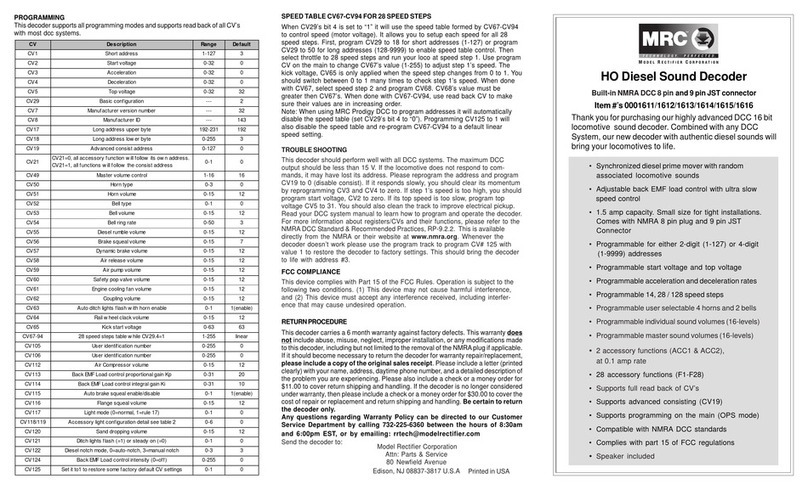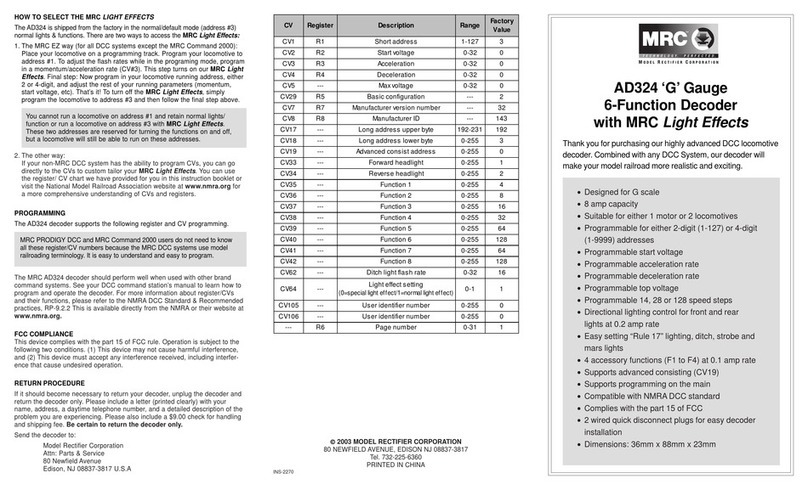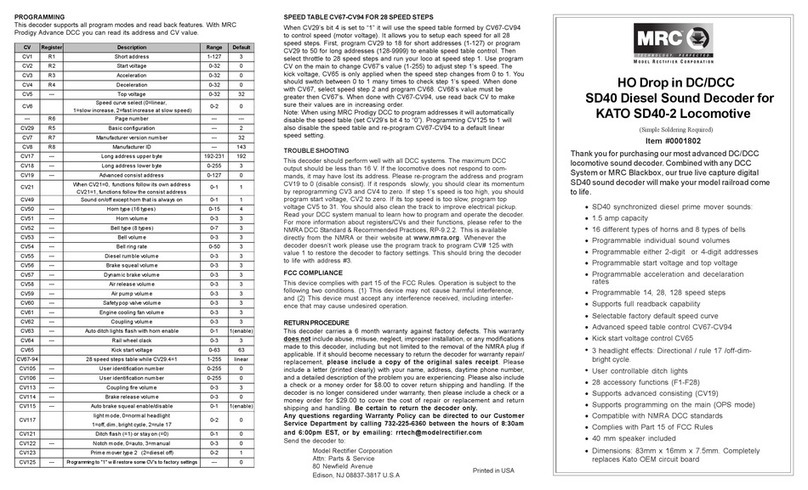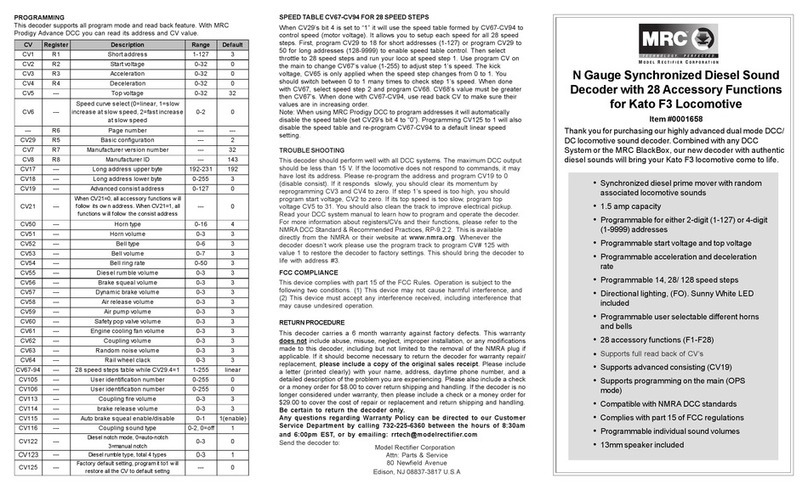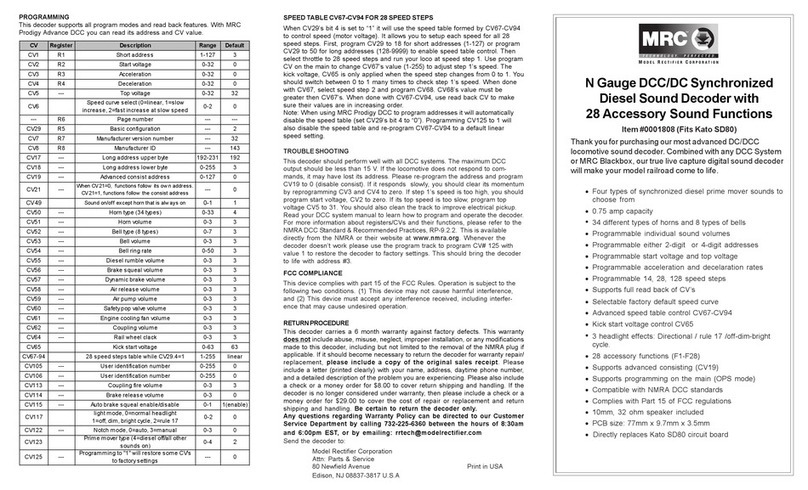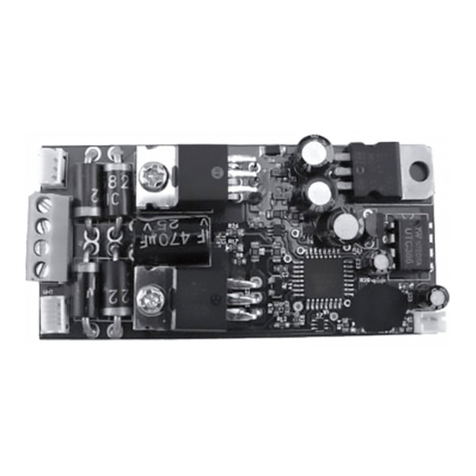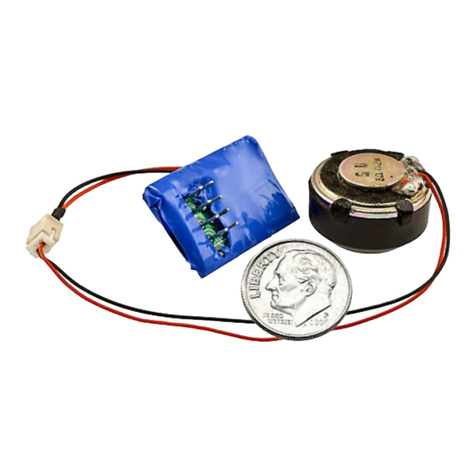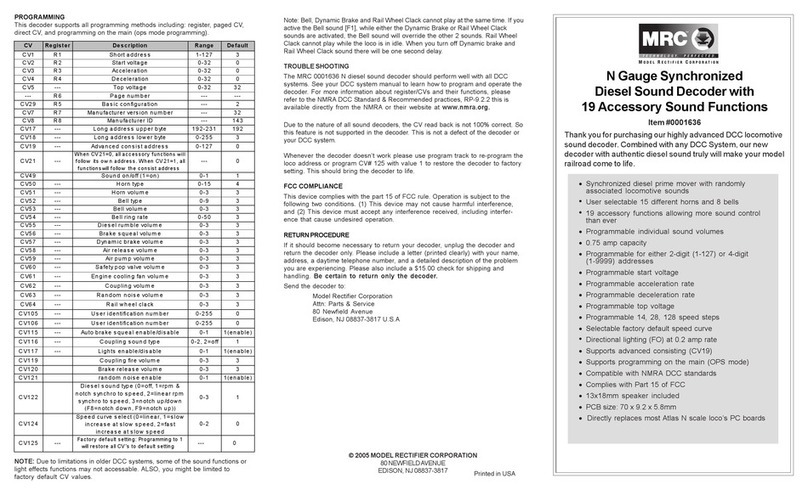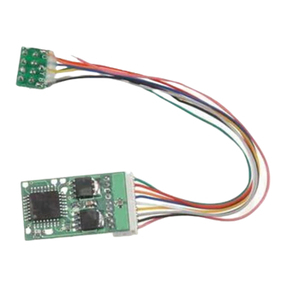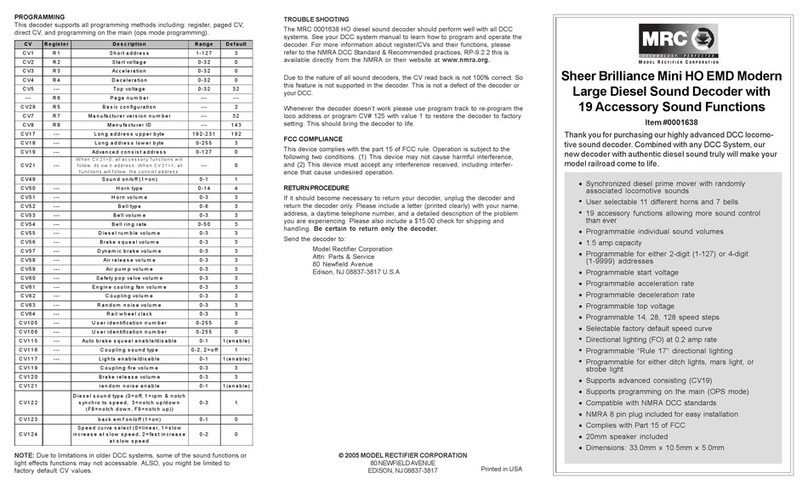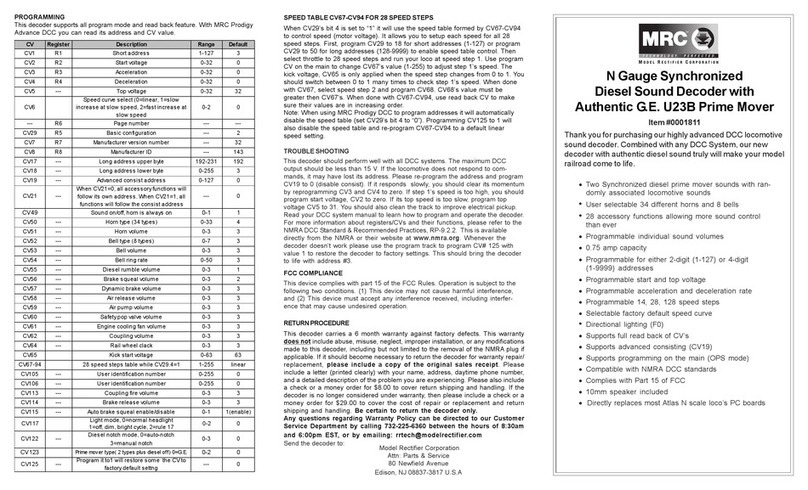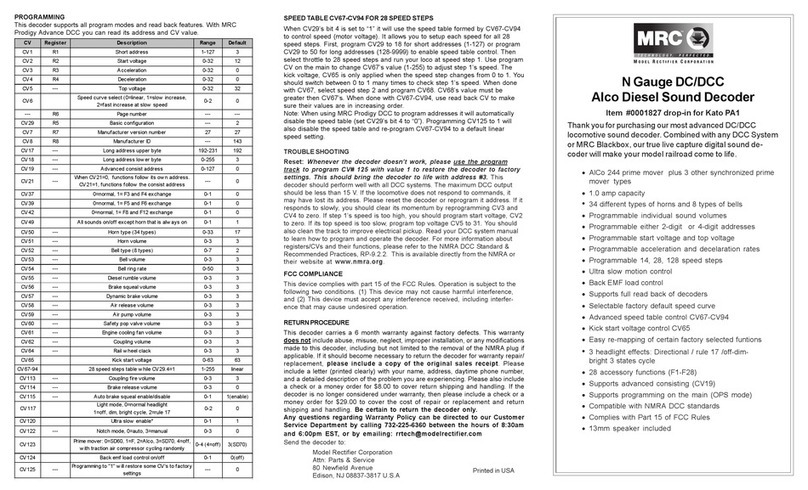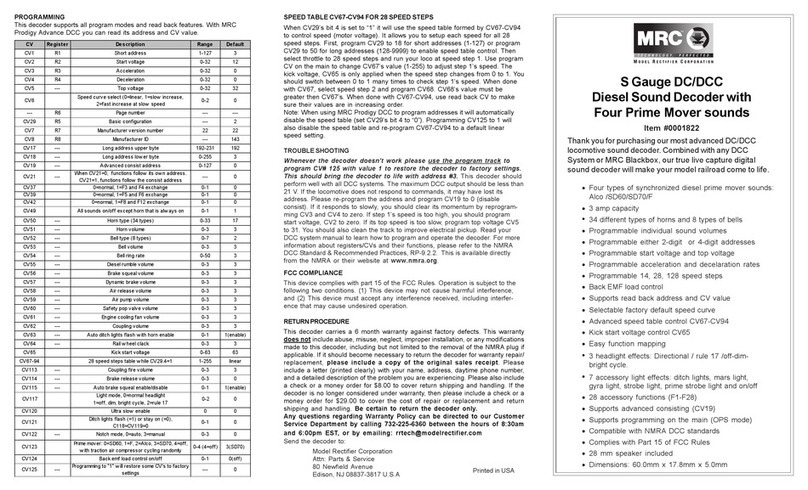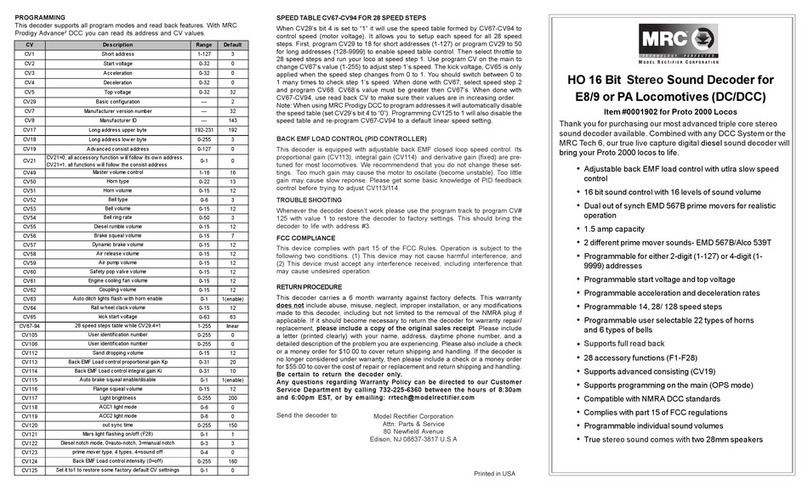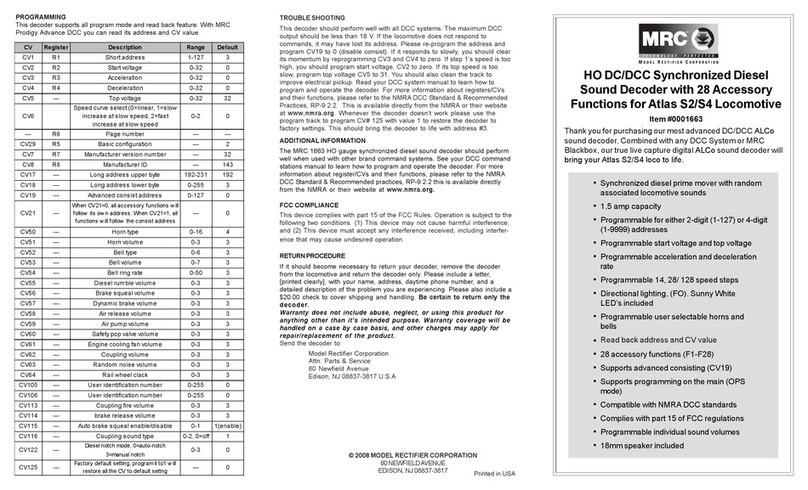
INSTALLATION
If your loco has an NMRA DCC socket, all you need to do is plug in the
decoder. However, it is quite a challenge to install a decoder into a locomo-
tive without the DCC socket. You should have some basic electrical knowl-
edge and soldering skills. If you do not have the above requirements, please
ask the dealer for help in installation.
Figure 1 shows the electrical circuit of most standard locomotives. The
terminals of the motor and lights are directly connected to the wheel pick-
ups. Each type of loco has its own method of electrical pickup. The con-
nection between wheel and motor/light could be wires, clips, the body or
any conductor. Figure out your locomotive’s electrical connection and how
to disconnect (isolate) the motor and lights. The decoder will be inserted
between the wheel pickups and the motor. The ‘X’ marks in Figure 1 show
you where to disconnect.
Figure 1. Connection of a standard locoNote: The ‘X’ signs indicate
where to disconnect (isolate)
Figure 2 shows you how to wire the decoder. After disconnecting the motor
terminals from pickups, connect the red wire to the right side pickup and
the black wire to the left side pick up. Connect the orange wire to the motor
terminal that originally connect to the right pickup. Connect the gray wire to
the motor’s other terminal. Connect the front light to the blue wire and the
white wire. Connect the rear light to the blue wire and the yellow wire.
The blue wire is the common terminal for lights and accessory functions.
You may use the black wire or the red wire to replace the blue wire. This is
very useful when you find that it is hard to isolate one of the light terminals
from the pickup. Wiring the bulb this way will also make the light dimmer.
If your loco has only a front light, you should connect the white and the
yellow wires together.
Solder tabs are furnished on the 0001650 decoder for accessory func-
tions F1, F2, F3 and F4. If you wish to use these functions, you can solder
wire to these tabs. Use a small wattage soldering Iron in conjunction with
electronic soldering paste. To avoid any damage on the decoder do not
solder one tab more than 5 seconds at a time. If you need more time to
solder, please let it cool down before soldering again.
TEST
All MRC decoders have been factory programmed with address #3, 28/128
speed steps and maximum top voltage. After you have finished your de-
coder installation, you are ready to test it. Never run the installed decoder
on your layout without first passing the test. You may damage the de-
coder if it is not wired correctly or if you have not properly isolated the motor
and the lights.
Put the loco on the test track. Select the Run Mode of your DCC system and
select or acquire address #3. Move up throttle and the loco should move
forward. Push the light button and the front light of your loco should turn on.
Push the reverse direction button. The loco should move backward and the
rear light should turn on. The loco cannot get to normal speed because
there is a 20 ohm protection resistor in the test track. If you are able to turn
on/off the front and rear lights and you are able to move the loco in forward
and reverse, you did a great job. Congratulations! Do not test the loco on
the test track for an extended period of time. To do so will cause the
protection resistor to overheat.
MAKEATESTTRACK
Before you start with your decoder installation, we strongly recommend
building a test track which uses a 20 ohm resistor to limit current. Only test
your installed decoder on the test track. The test track will prevent any
damage due to an incorrectly wired decoder.
Figure 3. Diagram of test track
OPERATION
Headlight
There are three ways to operate headlight (depends on CV60):
1. Normal directional lighting (CV60=0)
2. Rule17 lighting (CV60=1). One light is bright to indicate direction
of travel, the other is dim.
3. Both front and rear headlight on / off at the same time (CV60=2).
MRCLIGHTEFFECTS:
There are four function output solder tabs (F1, F2, F3, F4) on the
decoder. When CV64=0, they are normal on/off and controlled by
accessory function F1 to F4. When CV64=1, They are MRC Light
Effects (ditch light, mars light and strobe light). All MRC Light
Effects have adjustable flash rates.
1. Ditch lights (CV64=1): Using decoder function output solder tabs
F1 and F2 plus decoder blue common wire. Accessory function F1
controls the both ditch lights stead on or off. Fucntion F2 triggers ditch
lights flashing 10 times.
2. Mars light (CV64=1): Using decoder function output solder tabs
F3. Function F3 turns on or off mars light.
3. Strobe light (CV64=1): Using decoder function output solder tabs
F4. Function F4 turns on or off strobe light.
HOWTOSELECTTHE MRC LIGHT EFFECTS
The decoder is shipped from the factory in the normal/default mode
(address #3) normal lights & functions. To access the MRC Light
Effects you have to program CV64 to value 1 (CV64=1). CV61controls
ditch light rate. CV62 controls mars light rate. CV63 controls strobe light
rate. Refer DCC manual to learn how to program CV. See the register/
CV chart to custom tailor your MRC Light Effects. For a more
comprehensive understanding of CVs and registers.visit the National
Model Railroad Association website at www.nmra.org.
X X X
X
Figure 2. Decoder wiring diagram
If your installed decoder does not pass the test, find the problem, cor-
rect it and test it again. As long as you test the decoder on the test track
there is little chance of damaging your decoder. This is why making a
test track is so important.
X X
Right side pickup
Front
light Motor Rear
light
Left side pickup
black
white
left
right
orange
gray
Motor
blue
red
yellow
rear light
front light
F4 solder tab
ditch light
strobe light
mars light
ditch light
F1 solder tab
F3 solder tab
F2 solder tab
DCC base unit
Power supply
Test track
20 ohm resistor
F4 solder tab
F1 solder tab
F3 solder tab
F2 solder tab
NMRA DCC plug












